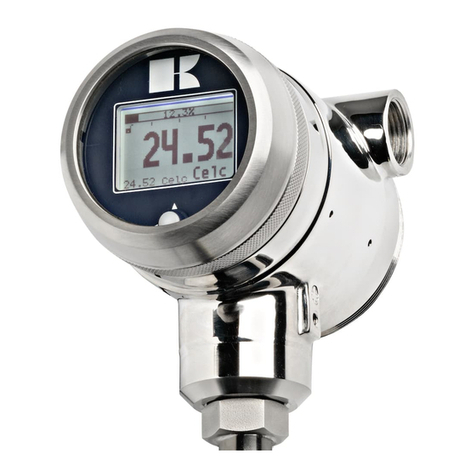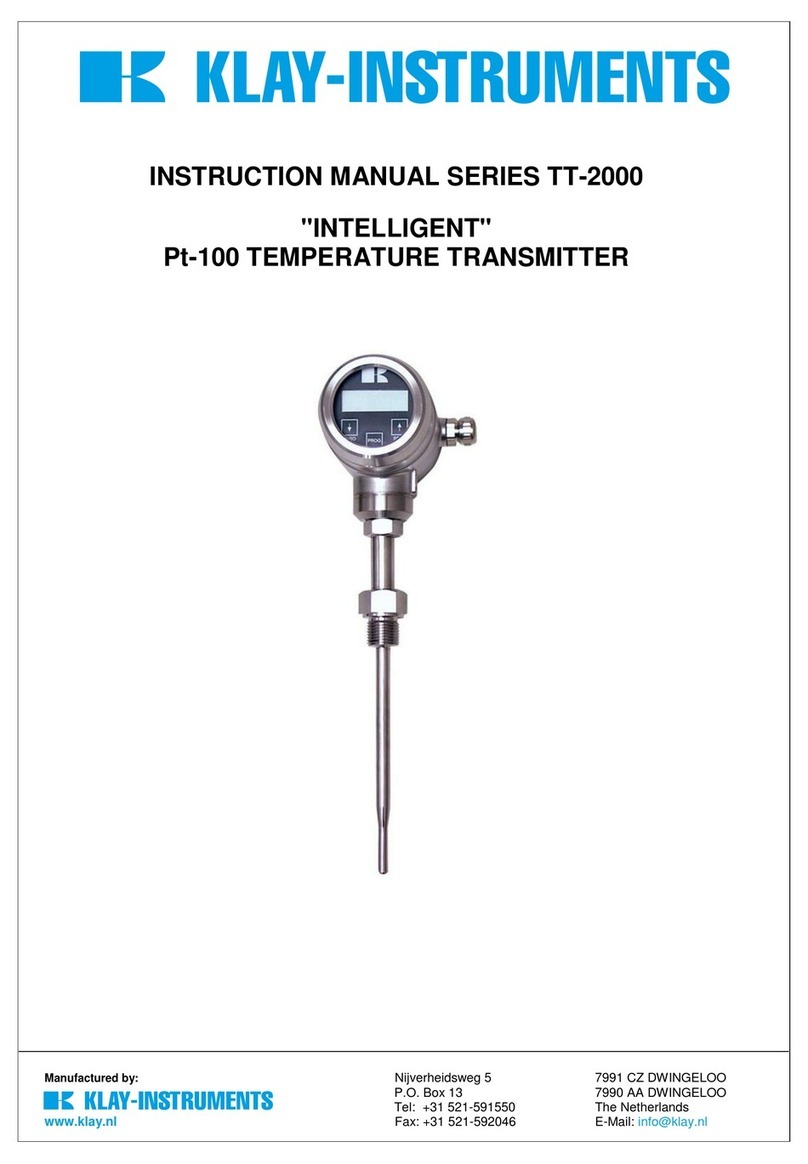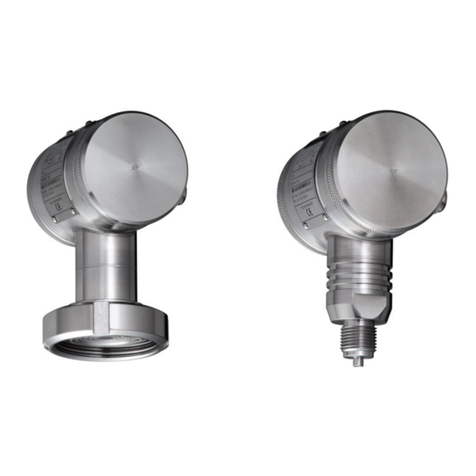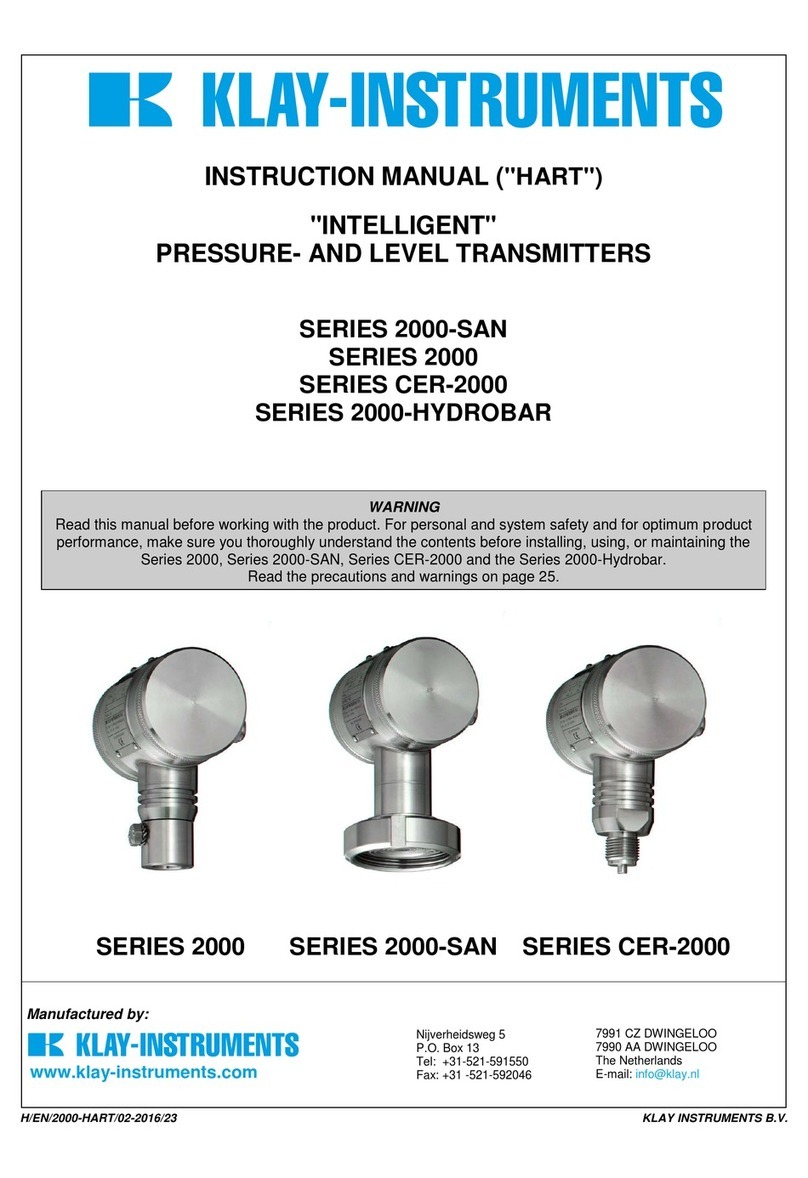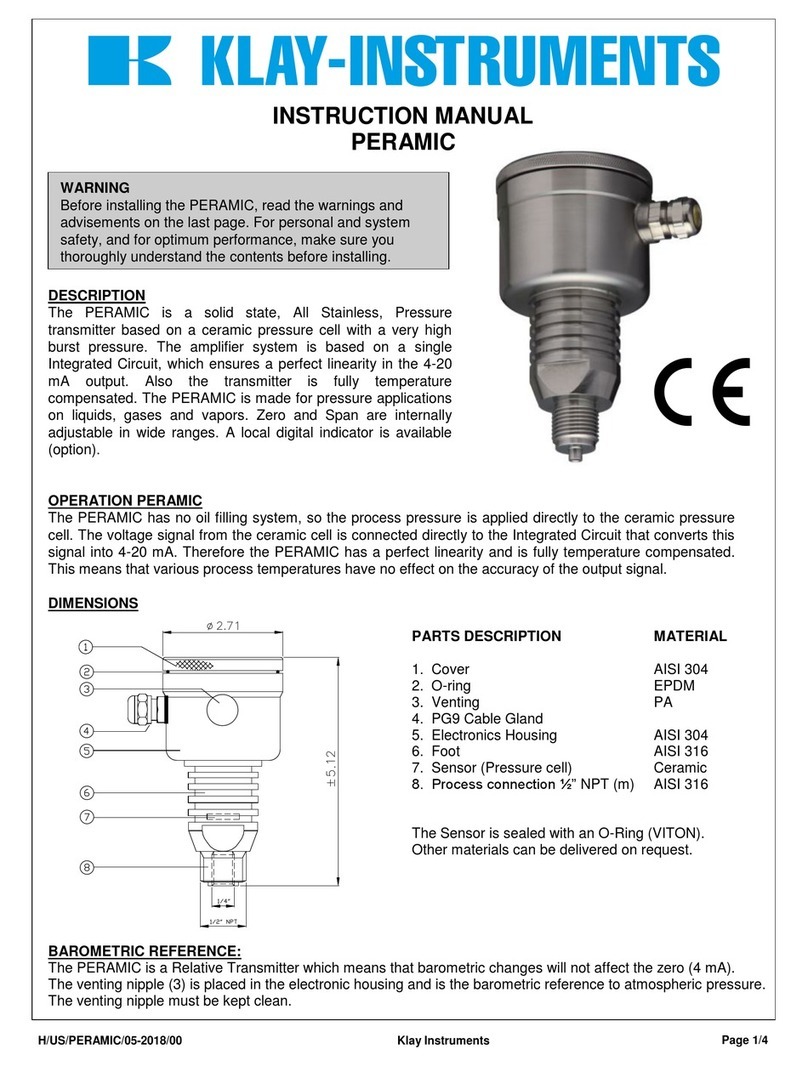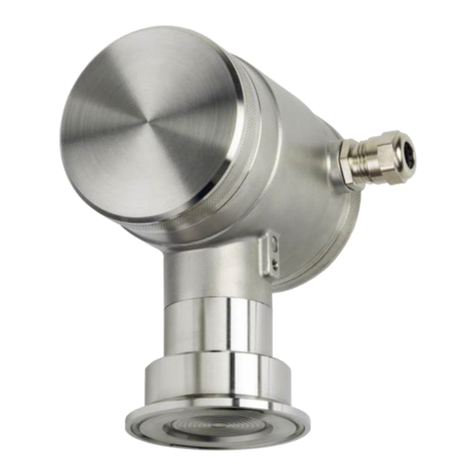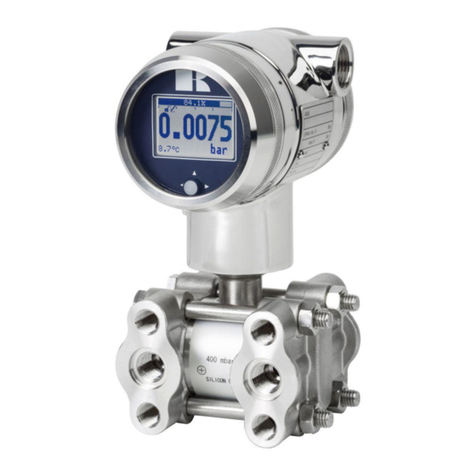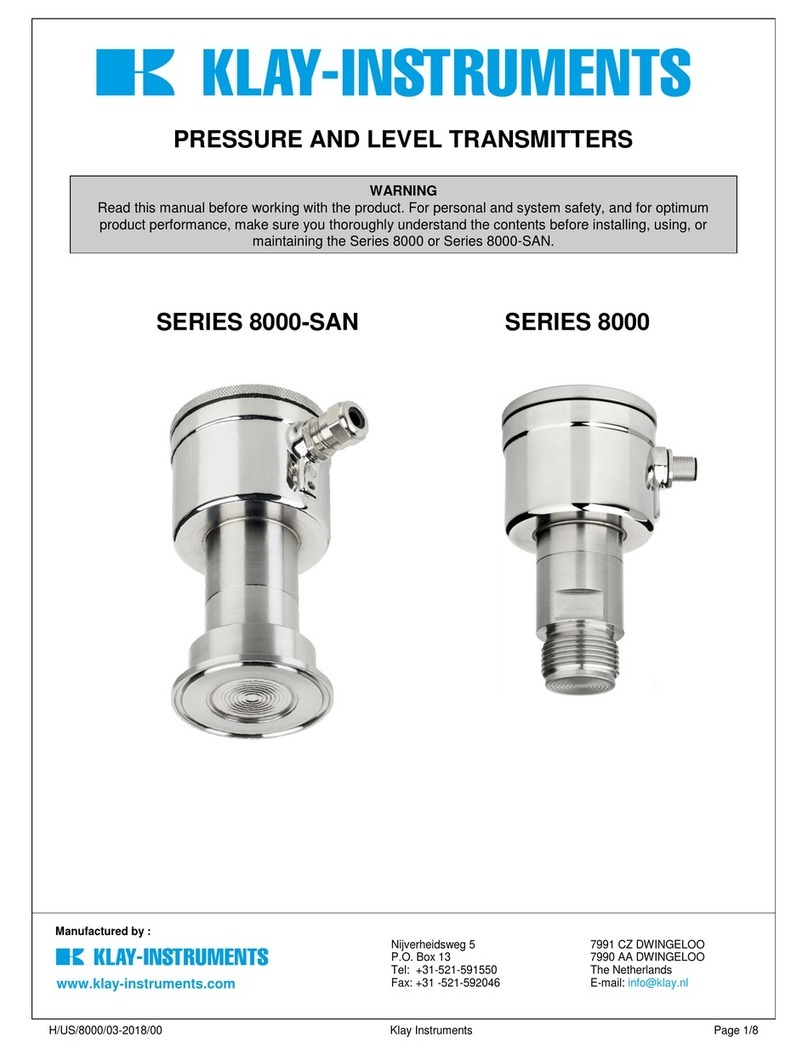WARNING: BEFORE OPENING THE VALVE, MAKE SURE THE TRANSMITTER IS LOCKED.
BE SURE THE VALVE IS CLOSED WHEN HE TRANSMITTER IS RETRACTED FROM VALVE.
THIS IS EXTREMELY IMPORTANT OTHERWISE THE TRANSMITTER WILL PUSH OUT OF THE PROCESS.
3.1 INSTALLING TRANSMITTER SERIES 2000-VALVE-RANGE
The position of the valve depends on the welding position of the weld-on nipple. Before welding, locate
weld-on nipple so that the valve is in the right position.
DO NOT DAMAGE THE THREAD.
3.2 MOUNTING POSITION
When the transmitter is mounted horizontally, the cable gland MUST be pointed downwards.
3.3 MOUNTING POSITION EFFECT
All transmitters are calibrated in vertical position.
If the transmitter is mounted in a different position, there will be a little zero shift.
If the transmitter is mounted up, there is a zero shift (e.g. 4,03 mA instead of 4mA). If the transmitter is
mounted down, there is a zero shift (e.g. 3.97 mA instead of 4mA).
After installation of the transmitter the zero must be set to 4.00 mA with "P103" in the
programming mode. This will not affect the span.
3.4 CALIBRATION
All transmitters are fully calibrated at the factory, to the conditions stipulated in users order. When the
buyer has not requested calibration, the transmitter will be calibrated at the highest span. It is advised to
re-calibrate the transmitter after shipment.
3.5 WIRING
Under the cover (3) you will find the terminal board.
The push buttons "Zero", "Span" and "Prog" are under the
other cover (1).
External loads must be placed in the negative leg of the 2-
wire loop.
The figure left shows the wiring connection of the transmitter.
The 2-wires must be connected to 3(-) and 4 (+) of the
terminal board.
The transmitter must always be connected to earth.
The transmitter must be connected with standard two-wire
shielded cable. Do NOT run signal wiring in open trays with
power wiring, or near “heavy” electrical equipment (E.g.:
Frequency controller or heavy pumps).
Shielding must always be connected at the side of the power
supply. In case the process connection is already connected
to ground (e.g. via the tank or pipe line) DO NOT connect the
instrument to ground. Please ensure that the instrument is
not connected to ground twice to prevent an 'earth loop'. In
applications with synthetic process connections, the
enclosure (internal or external) must be connected to ground.
